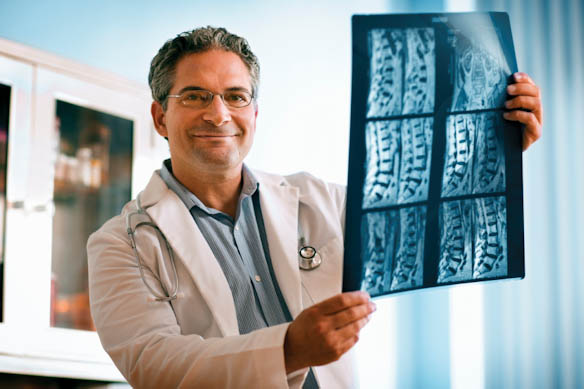 There comes a point in the lives of most individuals when surgery is necessary to repair the damage done by injury or disease. Not all surgeries, and not all surgeons, are alike. In fact there are various different kinds of surgeries that can be performed on an individual and they all vary depending upon what injury or disease a patient is suffering from. The branch of surgery known as orthopaedic surgery is the branch that deals with the musculoskeletal system of the body.
There comes a point in the lives of most individuals when surgery is necessary to repair the damage done by injury or disease. Not all surgeries, and not all surgeons, are alike. In fact there are various different kinds of surgeries that can be performed on an individual and they all vary depending upon what injury or disease a patient is suffering from. The branch of surgery known as orthopaedic surgery is the branch that deals with the musculoskeletal system of the body.
In human beings the musculoskeletal system is that which provides us with the ability to move through the use of the muscular and skeletal systems of the body. The musculoskeletal system provides an individual’s body with form, support, stability, and movement. When people have a problem with some portion of the musculoskeletal system they most likely will require orthopaedic surgery to help correct the problem. The need for orthopaedic surgery can result from any of the following problems:
- Musculoskeletal Trauma
- Sports Injuries
- Degenerative Diseases
- Infections
- Tumors
- Congenital Disorder
Modern human beings like to think that many of the most advanced features of society today are the result of recent breakthroughs, but in fact the concept of orthopaedic surgery goes back some 300 years and even beyond. The first medical institute devoted strictly to orthopaedic care and surgery was opened in 1780 to treat skeletal deformities in children. The battlefield has often been the place where some of orthopaedic surgery’s first developments were practiced. The use of medical tactics such as traction, splints, and rods on fractured bones were all developed on the fields of war and are now common practice in orthopaedic surgery. Orthopaedic surgery often requires repair to ligaments or severely broken bones which require implants to aid in stability.
Those who find themselves injured and in need of orthopaedic surgery range from those with minor injuries requiring less invasive surgery, to those in need of massive undertakings such as “open” knee reconstruction surgery and individuals requiring implants. As of 2003 some of the most commonly performed orthopaedic surgeries included:
- Knee arthroscopy and meniscectomy
- Shoulder arthroscopy and decompression
- Carpal tunnel release
- Knee arthroscopy and chondroplasty
- Removal of support implant
- Knee arthroscopy and anterior cruciate ligament reconstruction
- Knee replacement
- Repair of femoral neck fracture
- Repair of trochanteric fracture
- Debridement of skin/muscle/bone/fracture
While modern science may not have created the field of orthopaedic surgery, it has certainly played a big role in advancing new areas of operation, brought about better materials, and helped individuals recover faster. Traditional orthopaedic surgeries required “open” surgery with a high level of invasion within the body, exposing tissue to dangerous outside elements. In the 1950s arthroscopy was pioneered in Japan. This form of orthopaedic surgery was done through much less invasive tubes and allowed patients to heal in a matter of days instead of weeks. Advances in science have also allowed for orthopaedic surgeries that replace an entire hip joint or knee joint. Over the years the materials used in these surgeries have become more and more reliable, allowing individuals to live long happy lives with implants.